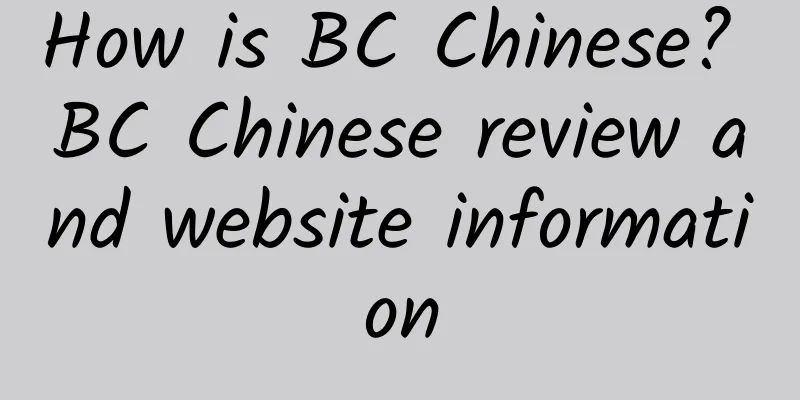What is the Lonely Planet series like? Lonely Planet series reviews and website information

|
What website is the Lonely Planet series? The famous Lonely Planet travel series was created by Tony Wheeler and Maureen Wheeler in Footscray, a western suburb of Melbourne, Victoria, Australia in 1972. The series has published 650 topics in total and is sold in 200 countries and regions around the world, accounting for about a quarter of the global sales of English travel guides. It is known as the "Bible" of backpackers. It first landed in the Chinese market in 2006. Website: www.lonelyplanet.com The Lonely Planet series, one of the world's most famous travel guide series, has become the "Bible" in the minds of countless travelers with its unique content and wide coverage since its launch in 1972. It is not only a set of books, but also a cultural symbol that symbolizes freedom, exploration and adventure. From the initial couple's trip to today's global brand, Lonely Planet has developed into a comprehensive travel resource library covering multiple platforms such as publications, websites, and social media. The story of Lonely Planet begins with a brave journey. In 1972, Tony Wheeler and Maureen Wheeler, a young Australian couple, decided to leave their comfortable lives and embark on an adventure across the Asian continent. They set out from London, traveled through the Middle East and South Asia, and finally arrived in Australia. During this journey that took several months, they recorded what they saw and heard along the way, and compiled these precious experiences into a booklet called Across Asia on the Cheap. This booklet was originally intended to be shared with friends and family, but it soon became widely popular for its practicality and authenticity, thus starting the legendary road of the Lonely Planet brand. Over time, Lonely Planet has grown into a huge travel guide system, covering almost all popular and unpopular destinations in the world. So far, the series has published more than 650 topics, covering a variety of travel experiences from urban adventures to wilderness hikes. These guides are known for their detailed information, vivid texts, and deep understanding of local culture, helping countless travelers plan their journeys and gain a deeper understanding of the unique charm of each place. Before the advent of the digital age, Lonely Planet mainly existed in the form of paper books. However, with the development of Internet technology, the brand has also kept pace with the times and established its own official website - www.lonelyplanet.com . This website is not only an online extension of the Lonely Planet series of books, but also a comprehensive platform that integrates information query, community interaction, and multimedia display. Users can use this website to obtain the latest travel information, read professional articles, watch short videos, and even participate in discussions or share their own travel stories. For many people who love to travel, Lonely Planet is not just a reference book or a website, but also a reflection of a life attitude. It encourages people to go out of their homes, explore the unknown world, and experience the collision and integration of different cultures. Whether you are a novice traveler who is setting foot abroad for the first time or an experienced backpacker, Lonely Planet can provide you with valuable guidance and support. In 2006, Lonely Planet officially entered the Chinese market, bringing a new travel perspective to Chinese readers. Although some Chinese translations had been circulated before, the launch of the officially authorized version undoubtedly further narrowed the distance between this international brand and Chinese consumers. Through localized content adaptation and special planning for the Chinese market, Lonely Planet has successfully attracted a lot of attention and continues to promote its advocated travel concept around the world. In short, Lonely Planet is more than just a set of books or a website. It represents a spirit of freedom and exploration. Whether flipping through the pages of a thick guide book or browsing the vibrant official website, we can feel the inspiring power that drives us to continue on a new journey. The creation of Lonely Planet stems from an extraordinary personal experience, which gives the entire brand a real and life-like quality. In 1972, Tony and Maureen Weller embarked on their first long-distance trip with curiosity about the world. This journey was not a luxurious one, but full of challenges and uncertainties: from strict control of the economic budget to overcoming language barriers and psychological adjustment in the face of unfamiliar environments, every step tested their determination and perseverance. It is this personal experience that makes Lonely Planet different from the beginning. Compared with other commercial travel guides, its content focuses more on practicality and operability. For example, the book lists in detail how to find cost-effective accommodation, how to choose safe and delicious restaurants, and how to communicate with local people. These details not only reflect the author's own travel wisdom, but also provide valuable reference for later readers. In addition, Lonely Planet also emphasizes understanding and respect for cultural differences. During the writing process, the editors are always committed to exploring the historical origins and social background behind each destination, rather than simply listing information about attractions. This approach not only allows readers to better integrate into the local environment, but also promotes cross-cultural communication and understanding. It is worth mentioning that the success of Lonely Planet is not accidental, but is built on its core values: helping more people achieve self-discovery and growth by sharing authentic and reliable travel experiences. This value orientation runs through all publications and remains unchanged after the subsequent expansion to digital platforms. In short, the reason why Lonely Planet can stand out in the fiercely competitive market is that it is rooted in real travel experience and has both depth and breadth of content presentation. It is not only a travel guide, but also a textbook on how to better understand the world and ourselves. As one of the most popular travel guides in the world, the Lonely Planet series has won wide acclaim for its rich and diverse coverage of topics and in-depth and detailed content analysis. The series currently contains more than 650 independent topics, covering almost all major travel destinations around the world, from bustling cities to remote villages, from nature reserves to historical sites. Each book is a comprehensive exploration of a specific area or theme. First, in terms of geographical coverage, Lonely Planet has achieved a truly global layout. Whether it is Paris and London in Europe, Cape Town and Nairobi in Africa, New York and Los Angeles in North America, Rio de Janeiro and Buenos Aires in South America, or even Antarctica, a place that very few people can reach, there are special guides to provide tourists with detailed introductions. This wide coverage ensures that no matter where travelers go, they can find reference books that suit them. Secondly, in addition to regular destination guides, Lonely Planet has also launched many themed books focusing on specific areas of interest. For example, The Trekking Handbook provides detailed route planning and equipment recommendations for people who like outdoor activities; Food Journeys takes readers to explore the food culture of various countries and taste authentic flavors. In addition, there are customized products for multiple market segments such as family travel, honeymoon travel, and backpacker self-guided tours to meet the needs of different groups of people. More importantly, Lonely Planet is not satisfied with merely describing superficial phenomena, but strives to reveal the deep cultural connotations of each place. By interviewing local residents and participating in traditional festivals, the author team restores the most realistic scenes as much as possible, so that readers can not only understand "what to see", but also understand "why to see". For example, when introducing Varanasi, India, the book not only introduces the cremation ceremony by the Ganges, but also explores the religious significance and social impact behind this custom, providing readers with a more comprehensive cognitive framework. Finally, it is worth mentioning that the language style of Lonely Planet is both rigorous and infectious. Each article has been carefully polished to ensure the accuracy of the information while being interesting and inspiring. It is this balance that makes reading these books a pleasant experience even if you are not actually traveling. In summary, the Lonely Planet series has become an important force in the field of modern travel literature with its wide geographical coverage, diverse subject selection and profound insight. Whether it is a planned traveler or a pure interest enthusiast, they can gain inspiration and knowledge from it and start their own unique journey. In the current era of digitalization sweeping the world, Lonely Planet has followed the trend and expanded its rich travel resources from traditional paper media to cyberspace. Its official website www.lonelyplanet.com has become a bridge connecting travel enthusiasts around the world, providing users with a 24-hour online service platform. This transformation has not only expanded the brand's influence, but also enabled more potential travelers to easily obtain the information they need. Firstly, as a comprehensive travel information portal, www.lonelyplanet.com provides more flexible and varied content than paper books. The articles on the website are updated more frequently, which can timely reflect the latest developments of the destination, such as newly opened hotels, adjusted traffic rules or sudden safety warnings. This immediacy is an advantage that paper publications cannot achieve, especially in the fast-changing modern society. Secondly, the functional design of the website fully considers the needs of user experience. Users can set search conditions according to their personal preferences and quickly locate travel destinations or types of activities they are interested in. For example, if you are looking for a restaurant suitable for vegetarians, just enter keywords to get relevant recommendations. At the same time, the addition of the map function makes navigation more intuitive, and users can directly view the specific location of a place and the distribution of surrounding facilities. In addition, www.lonelyplanet.com also actively embraces new media technologies, and enhances the effect of information transmission through pictures, videos and other forms. High-definition photos show the charm of the scenery of various places, and short videos condense the core highlights of the entire travel experience in just a few minutes. These multimedia elements greatly enhance the user's sense of immersion, allowing them to feel the atmosphere of a foreign country even at home. More importantly, the website has built an open community environment, encouraging users to share their travel stories and experiences. Interactive sections such as comment areas and forums allow readers to exchange opinions and solve problems together. This two-way communication model not only increases user stickiness, but also further enriches the content ecology of the website. Finally, in order to adapt to the development trend of mobile Internet, www.lonelyplanet.com has also developed a dedicated application that supports offline downloading, allowing users to access important information without an Internet connection. This move is especially popular among travelers who travel to areas with poor signal coverage. In summary, www.lonelyplanet.com , as an important part of the Lonely Planet brand, has successfully achieved seamless integration from offline to online, providing a comprehensive, multi-level information service platform for global travelers. In the future, with the advancement of technology and changes in demand, I believe that this website will continue to evolve and bring more surprises. Although Lonely Planet has achieved great success in the international market, it faced many challenges when it first entered the Chinese market. These challenges came from cultural differences, market competition, and technical adaptation. However, with its precise grasp of localization strategies and deep understanding of Chinese readers' needs, Lonely Planet eventually overcame these difficulties and gradually established its leading position in China's travel publishing industry. First of all, cultural differences are the first major obstacle that Lonely Planet encountered when entering the Chinese market. Due to the differences in Eastern and Western ways of thinking, the expressions and organizational structures commonly used in Western travel guides may not be completely suitable for Chinese readers. For example, Chinese people generally prefer to plan their itineraries in detail, and the relatively brief itinerary suggestions in the early versions of Lonely Planet may not meet this demand. For this reason, the editorial team has particularly strengthened the guidance on specific itineraries, including clearly marking the daily activity schedule, recommending priority tour sequences, etc., in an effort to make the guide more in line with the usage habits of Chinese consumers. Secondly, fierce market competition is also a factor that cannot be ignored. In China, local travel guides have long been dominant. They are often more familiar with the domestic tourism environment and can quickly respond to changes in market demand. Faced with this situation, Lonely Planet has adopted a differentiated competition strategy, focusing on highlighting its own advantages in international vision, while making appropriate adjustments based on China's actual situation. For example, when introducing foreign destinations, in addition to retaining the original English text, it has also added a large number of practical tips for Chinese tourists, such as visa application procedures, flight booking tips, etc. Furthermore, the issue of technology adaptation is also an important issue that needs to be addressed. As the penetration rate of smartphones increases, more and more Chinese travelers tend to check their travel plans through mobile apps. |
<<: How is Lincoln College, Oxford? Reviews and website information of Lincoln College, Oxford
>>: What is Vivien Leigh like? Vivien Leigh reviews and website information
Recommend
What are the effects of hair essential oils? The effects and uses of hair essential oils
Hair essential oils refer to those plant essentia...
How to grow succulent jade
The thick leaves and small and delicate appearanc...
How is Oliver Wyman? Oliver Wyman reviews and website information
What is the website of Oliver Wyman? Oliver Wyman ...
Does corn silk have any side effects?
What are the side effects of corn silk? What effe...
The effects and nutritional value of watermelon
Watermelon is a fruit that everyone is very famil...
The efficacy and nutritional value of wild kudzu
There are all kinds of wild plants growing in nat...
Summer tomato planting methods and techniques
How to grow tomatoes better in summer and how to ...
What is the World Chess Federation? World Chess Federation reviews and website information
What is the website of the World Chess Federation?...
What is the Brazilian Football Association like? Brazilian Football Association reviews and website information
What is the website of the Brazilian Football Asso...
Use white vinegar at night to lose 38 pounds. How to use white vinegar to lose weight effectively
After people's living standards have improved...
The efficacy and dietary taboos of ground ear
Ground ear, also known as celery or lichen, is a ...
The efficacy and function of horse whip dendrobium
People who pay attention to health in life have h...
What should be paid attention to after transplanting yew?
Yew is a very precious plant. It is not only of h...
The efficacy and function of wine dates
Wine-soaked dates have a strong wine aroma. They ...
Nutritional value and taboos of red grapes
Red grape, also called late red or red globe, is ...









